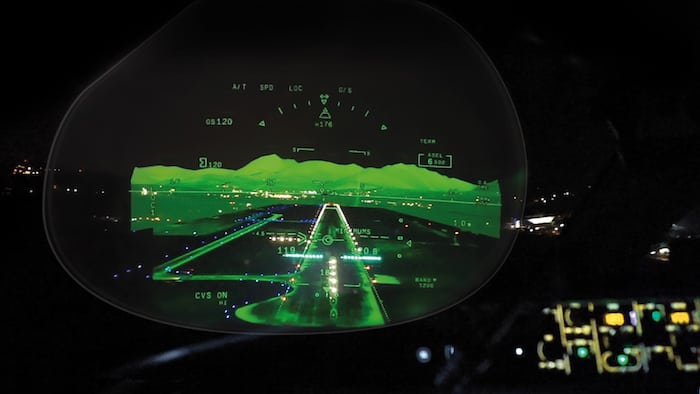
FalconEye is the first head-up display (HUD) to show separate synthetic, database-driven terrain mapping and enhanced thermal and low-light camera images at the same time. Photo courtesy of Dassault Aviation
The enhanced flight vision system (EFVS) on Dassault’s Falcon 8X has earned regulatory approval from EASA and FAA officials for operational credit in poor visibility approaches down to 100 feet.
With the recent certifications, pilots using the 8X’s FalconEye combined vision system (CVS) can use the technology as a navigational aid to descend down to a 100-foot decision height. Dassault completed a joint certification campaign with EASA and FAA earlier this year and expects the EFVS to 100-feet credit to be extended to the Falcon 2000LX and 900LX by the end of the year.
The latest operational credit approval follows an FAA ruling in December 2016 approving the use of EFVS in lieu of natural vision to continue descending from 100 feet above the touchdown zone elevation (TDZE) to the runway.
Dassault’s FalconEye, developed by Elbit Systems, is the first head-up display (HUD) to show separate synthetic database-driven terrain mapping and enhanced thermal and low-light camera images at the same time. It is also the first HUD to allow pilots to adjust the split between a synthetic vision system (SVS) and EFVS imaging areas.
FalconEye made its debut on the Falcon 2000LXS/S and the 900LX in October 2016. Dassault also plans to feature the system on its new Falcon 6X ultra wide body jet, which will enter into service in 2022.
Engineers at Dassault are also currently developing a further enhancement for the FalconEye, a new dual-HUD option that pilots to fly a full approach and land without using natural vision to see the runway. Regulatory approval of the dual HUD capability is expected by 2020.